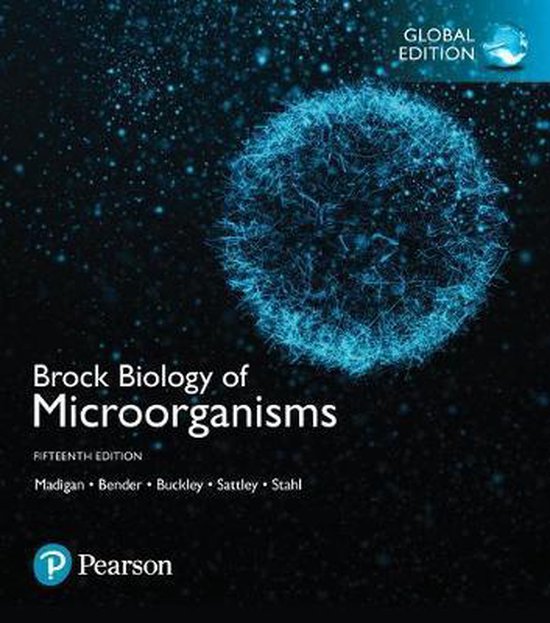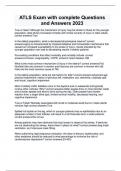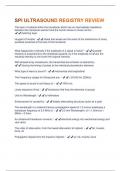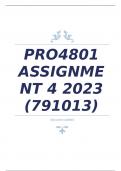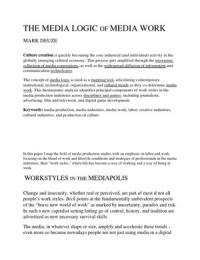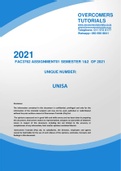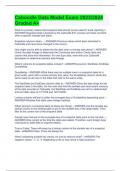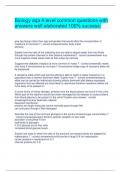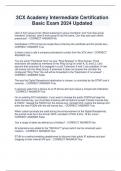L2-3 REGULATION
CHAPTER GLOSSARY
Activator protein: a regulatory protein Positive control: a mechanism for
that binds to specific sites on DNA and regulating gene expression in which an
stimulates transcription (involved in activator protein functions to promote
positive control) gene transcription.
Allosteric protein: a protein containing an Quorum sensing: a regulatory system that
active site for binding substrate and an monitors the population level and controls
allosteric site for binding an effector gene expression based on cell density.
molecule like the end-product of a
Regulatory nucleotide: a nucleotide that
biochemical pathway.
functions as a signal rather than being
Attenuation: a mechanism for controlling incorporated into RNA or DNA.
gene expression that terminates
Repression: prevention of synthesis of an
transcription after initiation but before full
enzyme in response to a signal (Arginine
length messenger RNA is produced.
repression)
Catabolite repression: the suppression of
Repressor protein: a regulatory protein
alternative catabolic pathways by a
that binds specific sites on DNA and blocks
preferred carbon and energy source.
transcription (involved in negative control)
Cyclic AMP: a regulatory nucleotide that
Response regulator protein: one of the
participates in catabolite repression (lot of
members of the two-component
glucose, small amount of cAMP)
regulatory system, a protein that is
Feedback inhibition: a process in which an phosphorylated by a sensor kinase and
excess of the end-product of a multi-step then acts as a regulator, often by binding
pathway inhibits the activity of the first to DNA.
enzyme of the pathway.
Riboswitch: an RNA domain, usually in a
Induction: production of an enzyme in mRNA molecule, altering its own
response to a signal (often presence of the secondary structure which controls the
substrate of the enzyme) translation of the mRNA.
Negative control: a mechanism for Sensor kinase protein: one of the
regulating gene expression in which a members of a two-component regulatory
repressor protein prevents gene system, a protein that phosphorylates
transcription. itself in response to an external signal and
then transfers the P group to a response
Operon: two or more genes transcribed
regulator protein.
into a single RNA and under control of a
single regulatory system (Lac operon) Two-component regulatory system: a
regulatory system consisting of two
proteins, a sensor kinase, and a response
regulator protein.
, 6.2 NEGATIVE CONTROL: REPRESSION AND INDUCTION
ENZYME REPRESSION (ARGININE REPRESSION) → ANABOLISM
- When arginine is present in the medium cells do not synthesize arginine
- Excess ARG decreases the amount of the enzymes needed for ARG synthesis.
- Only necessary enzymes are present → No E & nutrients are wasted for enzyme
synthesis.
- Arginine = corepressor → binds repressor regulatory protein → transcription is
stopped
- No arginine = no corepressor → repressor regulatory protein is not bound →
transcription goes on
ENZYME INDUCTION (LAC OPERON, LAC PROTEINS) → CATABOLISM
- The enzyme is made when its substrate is present.
- When lactose or allolactose is present, the beta galactosidase enzyme is transcribed.
- No lactose → the repressor protein binds the DNA → no transcription.
- Lactose → acts as an inducer effector, binds to repressor protein → allosteric change
→ falls off from DNA → transcription.
CHAPTER GLOSSARY
Activator protein: a regulatory protein Positive control: a mechanism for
that binds to specific sites on DNA and regulating gene expression in which an
stimulates transcription (involved in activator protein functions to promote
positive control) gene transcription.
Allosteric protein: a protein containing an Quorum sensing: a regulatory system that
active site for binding substrate and an monitors the population level and controls
allosteric site for binding an effector gene expression based on cell density.
molecule like the end-product of a
Regulatory nucleotide: a nucleotide that
biochemical pathway.
functions as a signal rather than being
Attenuation: a mechanism for controlling incorporated into RNA or DNA.
gene expression that terminates
Repression: prevention of synthesis of an
transcription after initiation but before full
enzyme in response to a signal (Arginine
length messenger RNA is produced.
repression)
Catabolite repression: the suppression of
Repressor protein: a regulatory protein
alternative catabolic pathways by a
that binds specific sites on DNA and blocks
preferred carbon and energy source.
transcription (involved in negative control)
Cyclic AMP: a regulatory nucleotide that
Response regulator protein: one of the
participates in catabolite repression (lot of
members of the two-component
glucose, small amount of cAMP)
regulatory system, a protein that is
Feedback inhibition: a process in which an phosphorylated by a sensor kinase and
excess of the end-product of a multi-step then acts as a regulator, often by binding
pathway inhibits the activity of the first to DNA.
enzyme of the pathway.
Riboswitch: an RNA domain, usually in a
Induction: production of an enzyme in mRNA molecule, altering its own
response to a signal (often presence of the secondary structure which controls the
substrate of the enzyme) translation of the mRNA.
Negative control: a mechanism for Sensor kinase protein: one of the
regulating gene expression in which a members of a two-component regulatory
repressor protein prevents gene system, a protein that phosphorylates
transcription. itself in response to an external signal and
then transfers the P group to a response
Operon: two or more genes transcribed
regulator protein.
into a single RNA and under control of a
single regulatory system (Lac operon) Two-component regulatory system: a
regulatory system consisting of two
proteins, a sensor kinase, and a response
regulator protein.
, 6.2 NEGATIVE CONTROL: REPRESSION AND INDUCTION
ENZYME REPRESSION (ARGININE REPRESSION) → ANABOLISM
- When arginine is present in the medium cells do not synthesize arginine
- Excess ARG decreases the amount of the enzymes needed for ARG synthesis.
- Only necessary enzymes are present → No E & nutrients are wasted for enzyme
synthesis.
- Arginine = corepressor → binds repressor regulatory protein → transcription is
stopped
- No arginine = no corepressor → repressor regulatory protein is not bound →
transcription goes on
ENZYME INDUCTION (LAC OPERON, LAC PROTEINS) → CATABOLISM
- The enzyme is made when its substrate is present.
- When lactose or allolactose is present, the beta galactosidase enzyme is transcribed.
- No lactose → the repressor protein binds the DNA → no transcription.
- Lactose → acts as an inducer effector, binds to repressor protein → allosteric change
→ falls off from DNA → transcription.

